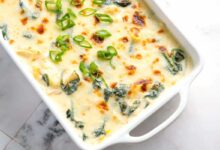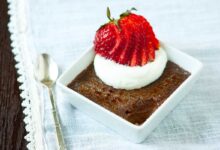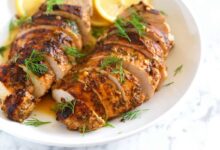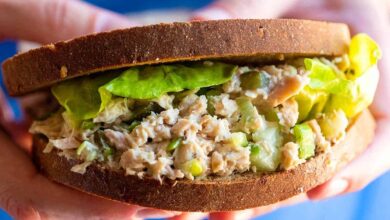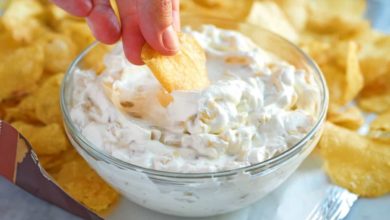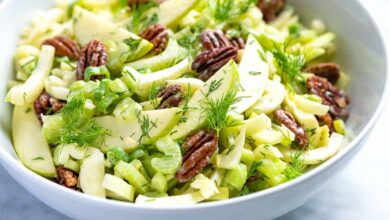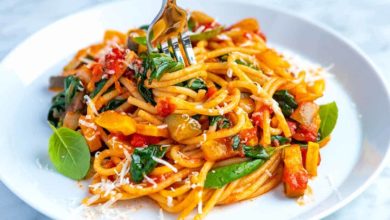This easy poached salmon recipe produces the juiciest, most tender salmon you’ll ever have! It is also one of our favorite salmon recipes! Our gentle poaching technique guarantees that your salmon will be flavorful and moist.
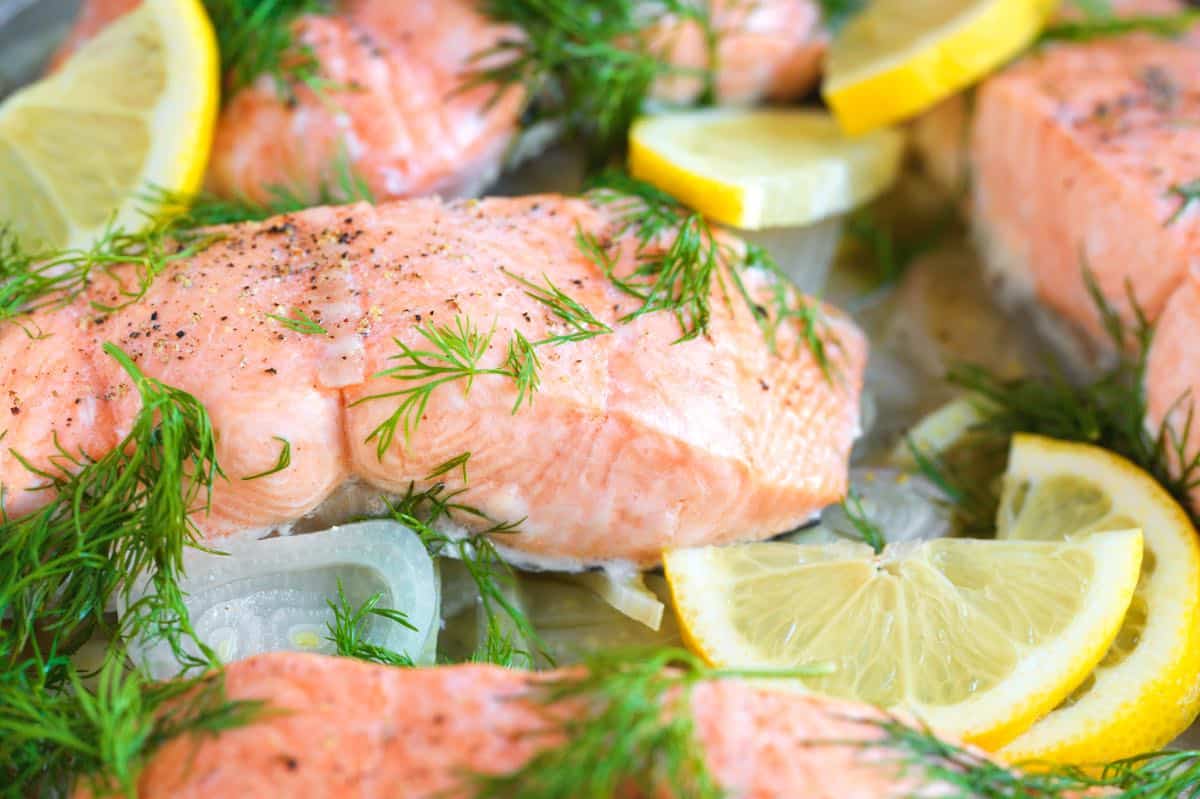
Related: See how we poach shrimp or this popular poached chicken recipe.
Poached Salmon Ingredients
You need salmon fillets, water, salt, and pepper for the most basic poached salmon. It’s that easy. I will talk about various aromatics I love when poaching below, but know this: poached salmon with water, salt, and pepper is delicious, tender, and succulent! The aromatics I share below only add to the party.
For the salmon, I use salmon fillets around 1 inch thick because thicker fillets will stay more tender and succulent when poached, but any piece of salmon will work with our method. I also like fattier varieties of salmon like King, Coho, and Sockeye. We also love Steelhead in this recipe since it is very similar to Atlantic salmon.
I tend to keep the skin on my salmon fillets. The skin is much easier to remove after cooking, and it acts as a barrier for heat coming from below the fillets, protecting them from overcooking.
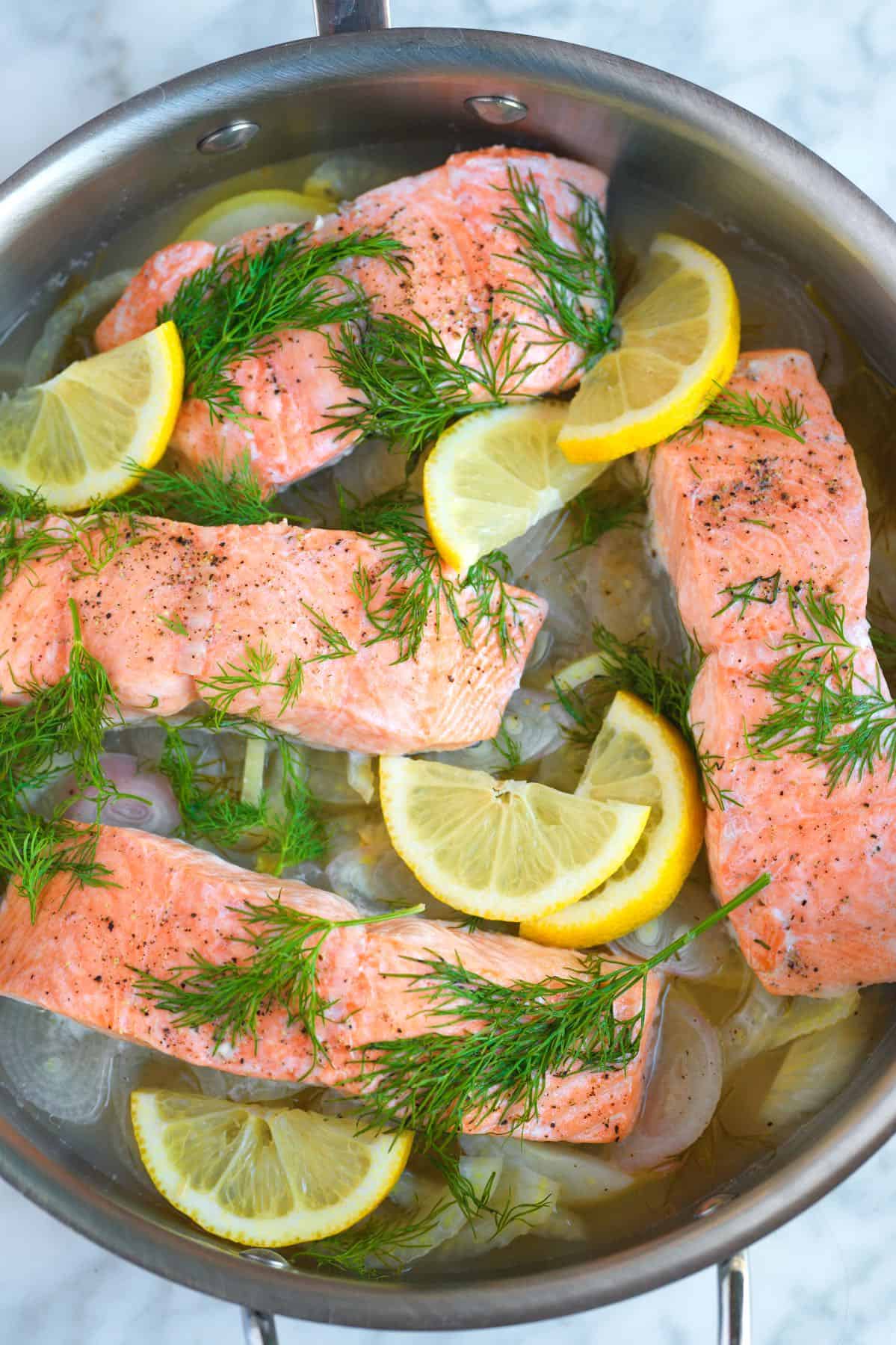
So, as I said above, you can make flavorful, tender poached salmon with water, salt, and pepper alone, but for some more flavor, we love the following ingredients for the poaching liquid:
- White wine or broth — I like using a blend of wine with water when I have white wine in the house. I used Lillet Blanc (leftover from making this French onion soup) in our photos and loved the results! Wine adds such a fantastic flavor and works beautifully with salmon. When I don’t have wine on hand, I use broth. Vegetable broth or a light chicken broth are good options; if you have it, seafood stock is excellent. Remember that water is perfectly adequate when poaching salmon, so if you don’t have wine or broth, use water.
- Sliced lemon — Poaching salmon with fresh lemon is classic! Limes and even oranges are also excellent in poaching liquid.
- Sliced shallot — I love the delicate, sweet flavor and aroma of shallot, which is why I love them in this poaching liquid. Smashed garlic cloves or sliced sweet onion are good alternatives.
- Sliced fennel bulb — While optional, whenever I plan to poach salmon, I throw a fennel bulb into my cart at the store. I love how it perfumes the salmon fillets with its sweet licorice aroma. I might even throw in a few extra to the cart and make this fennel and apple salad to serve with my salmon (it is such a fantastic combination).
- Fresh herbs, especially fresh dill — Dill and salmon are a classic combination, not to mention we love dill around here (see this baked salmon, our dill and chickpea salad, and these dill pickles).
How to Poach Salmon
To poach salmon, follow these easy steps. First, if using them, add aromatics (such as lemon slices, shallot, fennel, and herbs) to the bottom of a skillet with a lid. Then place seasoned salmon fillets down in one layer on top of your aromatics.
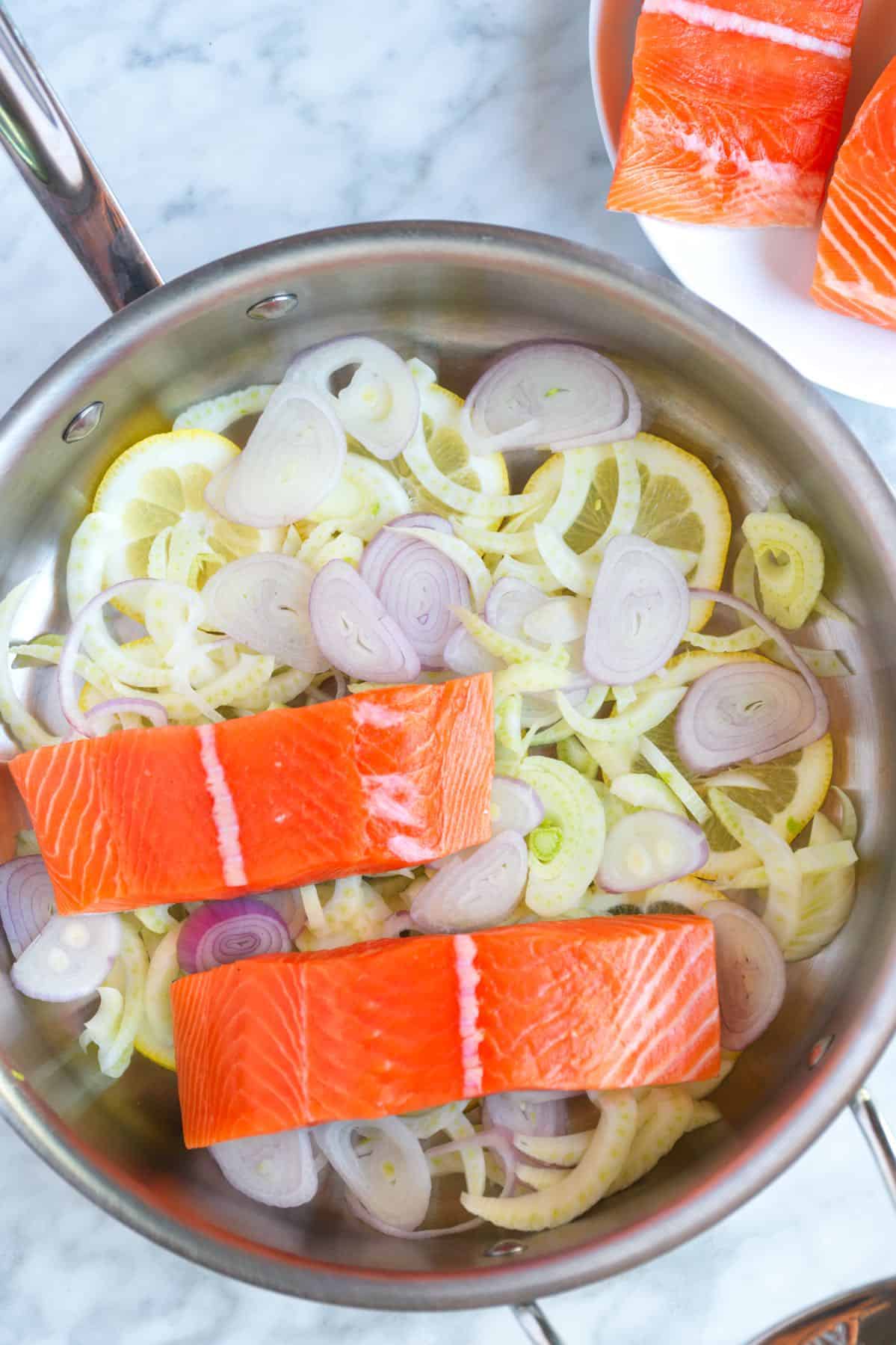
Pour 1 ½ cups of liquid (water, broth, or white wine) into the skillet. The liquid only needs to come 1/4 the way up the salmon (if that). We are shallow poaching the salmon, and since it cooks with the lid on, the whole piece of salmon will gently poach/steam even if it isn’t fully submerged in the poaching liquid.
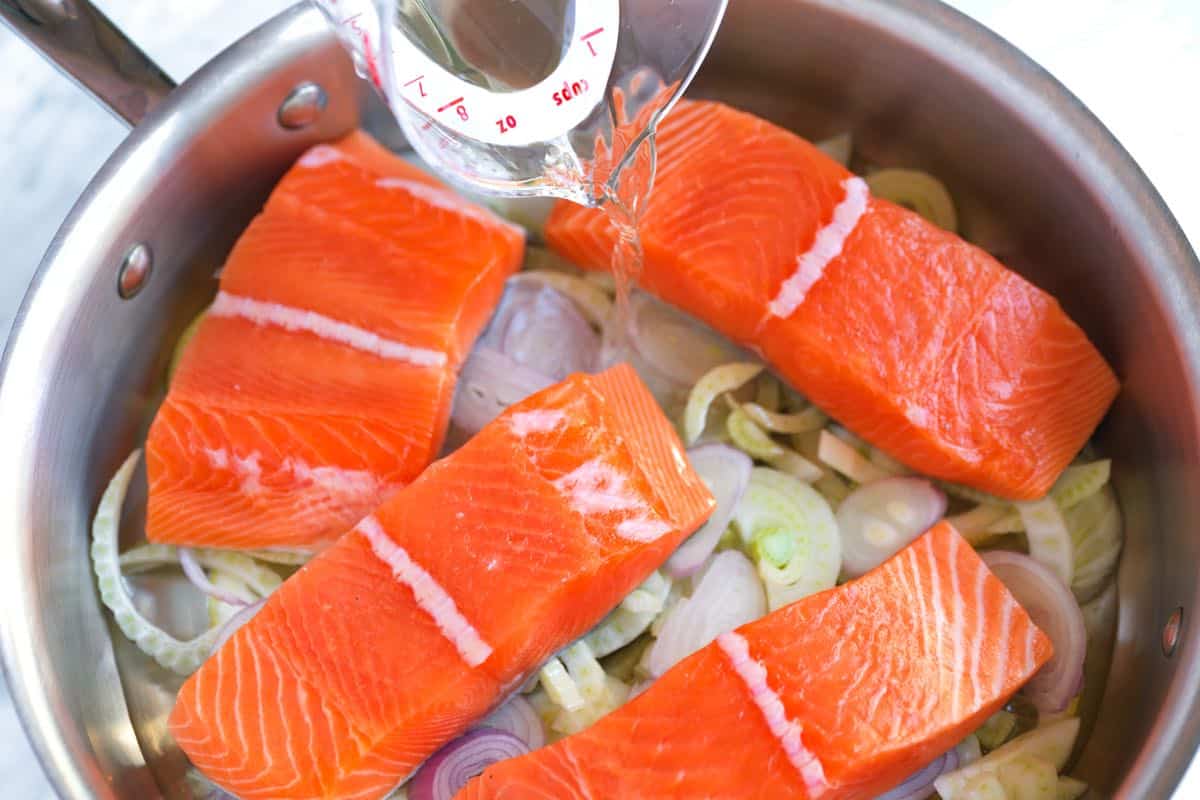
I like scattering quite a lot of fresh dill into the skillet. Other herbs like thyme, a bay leaf, mint, and parsley are all great options.
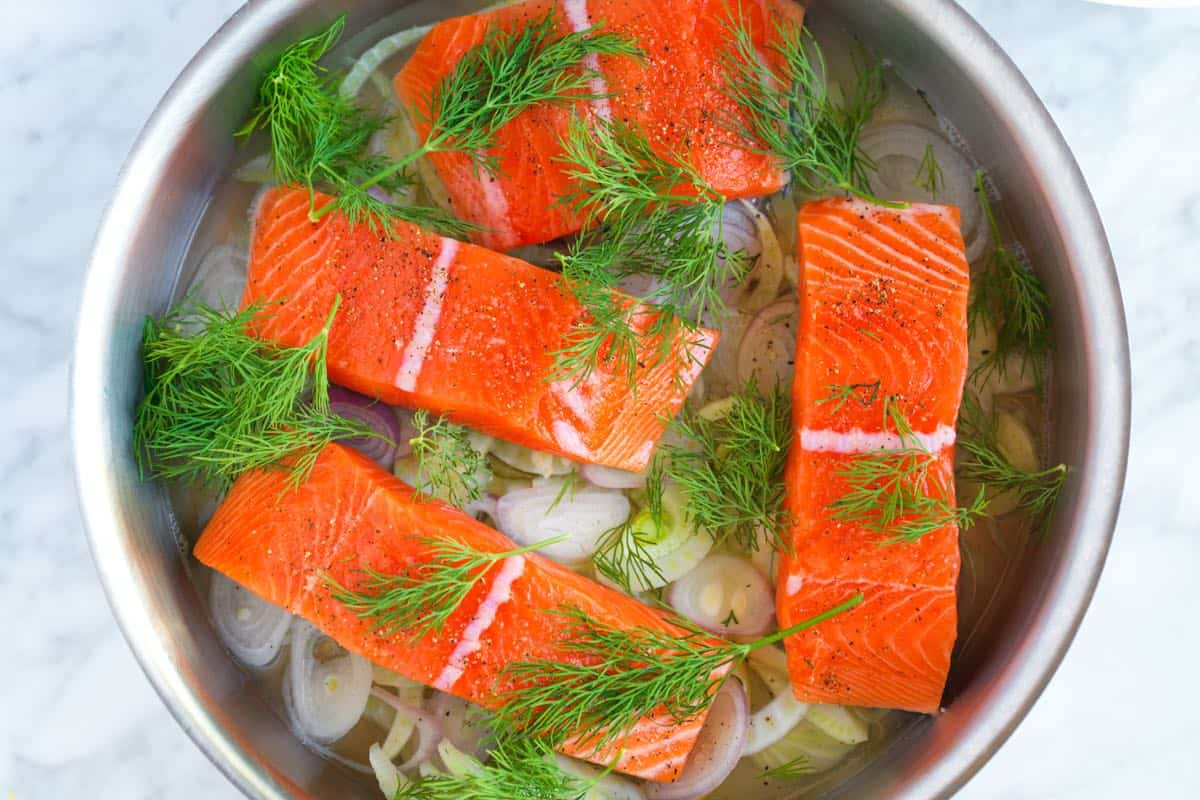
Bring the liquid to a simmer, then reduce the heat to low and cover with a lid until the salmon is cooked in the middle (refer to the notes below for guidance on telling when the salmon is done).
How to Tell When Salmon is Done
Depending on your salmon fillets’ thickness, you are looking at 5 to 12 minutes to poach salmon. It’s easy to tell when salmon is cooked with these two simple checks:
First, you can use a meat thermometer to check the internal temperature of the thickest part of the salmon fillet. For medium doneness, remove the salmon from heat when the temperature is between 125-130°F (52-54°C). If you prefer firmer salmon in the middle, cook it to an internal temperature of 145°F (63°C).
Another way to check is by the texture of the salmon. When it flakes easily with a fork, it is finished cooking. Simply push a fork into the thickest area of the fillet. If the salmon flakes, it is ready. If it is resistant, poach the salmon a little longer.
For more easy salmon recipes, see our hoisin glazed salmon (recipe coming soon) or this lemon and dill baked salmon.
How to Serve Poached Salmon
Perfect Poached Salmon
-
PREP
-
COOK
-
TOTAL
Poached salmon is one of our favorite salmon recipes! By poaching the salmon, it cooks quickly and stays moist, flaky, and tender. The aromatics (lemon, shallot, fennel, and dill) are optional, but add lots of delicious flavor. For the poaching liquid, you can use water, broth, or a combination of water and white wine.
Serves 4
You Will Need
4 skin-on salmon fillets, 6 ounces each
1 cup water
1/2 cup white wine or broth
1 lemon, sliced
1 shallot, sliced
1 medium fennel bulb, sliced
Salt and fresh ground black pepper
Directions
1Make a bed of lemon slices, shallot, and fennel in the bottom of a wide skillet with a lid.
2Lightly season the salmon fillets with salt and pepper, then place them, skin side down, on the lemon slices, shallot, and fennel.
3Pour in the water and wine. The liquid does not need to cover the salmon. Since we are cooking it with the lid on, the salmon with poach/steam, even if they are not submerged in the liquid.
4Scatter fresh dill around the pan.
5Place the skillet over medium-high heat and bring to a simmer. When the liquid is aggressively simmering, turn the heat to low and cover the skillet with its lid.
6Cook until an internal temperature thermometer reads between 125-130°F (52-54°C) or when the thickest part of the salmon flakes when pierced with a fork; 5 to 12 minutes, depending on how thick the salmon fillets are. Serve
Adam and Joanne’s Tips
- Use skin-on fillets: The skin is much easier to remove after cooking, and it acts as a barrier for heat coming from below the fillets, protecting them from overcooking.
- Nutrition facts: The nutrition facts provided below are estimates. We have used the USDA database to calculate approximate values.
If you make this recipe, snap a photo and hashtag it #inspiredtaste — We love to see your creations on Instagram and Facebook! Find us: @inspiredtaste
Nutrition Per Serving
Serving Size
1 fillet
/
Calories
280
/
Total Fat
10.1g
/
Saturated Fat
2.2g
/
Cholesterol
76.5mg
/
Sodium
203.6mg
/
Carbohydrate
2.6g
/
Dietary Fiber
0.8g
/
Total Sugars
1.1g
/
Protein
37.1g


